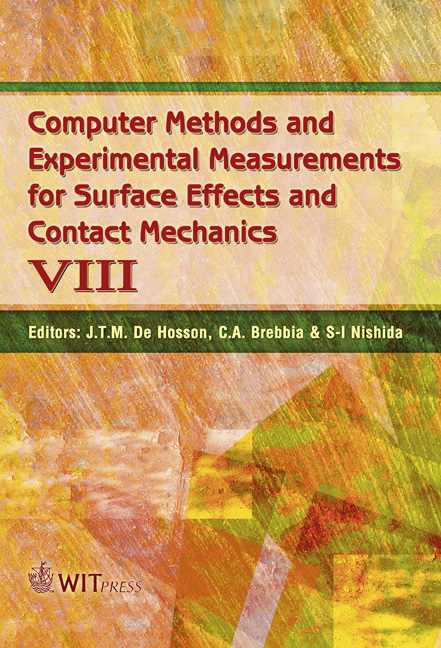Expansion Of Capillary Force Range By Probe-tip Curvature
Price
Free (open access)
Transaction
Volume
55
Pages
10
Published
2007
Size
417 kb
Paper DOI
10.2495/SECM070311
Copyright
WIT Press
Author(s)
K. J. Obata, S. Saito & K. Takahashi
Abstract
This paper deals with the expansion of capillary force range with a concave probetip for micromanipulation. From numerical simulation,we found the following; the concave probe-tip can generate a much larger capillary than a flat one, provided it is designed to fit the convex surface of the object; the more wettable a material is, the greater capillary force it can generate; the magnified capillary force can be reduced/controlled by liquid volume regulation. To prove this, we measured the capillary force for a given gap distance between a spherical object and a concave surface coaxially fabricated in a cylinder.We used three different materials (glass, stainless steel, and polytetrafluoroethylene) to check the influence of contact angles. The liquid volumes were given in the range from one hundredth- to ten-times the radius of the cubed sphere. Comparison between our experimental data and the theoretical prediction expressed in the normalized form shows good agreement, if the liquid volume is larger than a certain value. This suggests that micromanipulation by capillary force should be more practical by using probes with concave tips specifically designed for the object. Keywords: micromanipulation, hydrostatics, liquid bridge, capillary force. 1 Introduction Recently, micromanipulation techniques have been in demand to fabricate highly functional micro-devices or micro-electro-mechanical-systems(MEMS). In micromanipulation, the influence of adhesional force is extremely large compared to gravitational force [1, 2]. Furthermore, adhesional force has large dispersion
Keywords
micromanipulation, hydrostatics, liquid bridge, capillary force.





